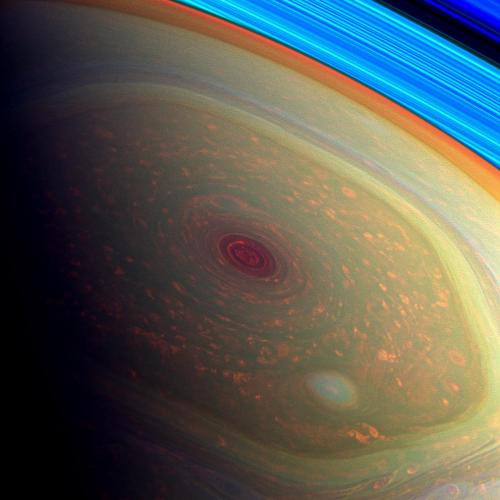Jupiter (with Moons) And Venus

Jupiter (with moons) and Venus
More Posts from Night-hides-the-world and Others





Starry Greetings!
Let’s start hot objects month with our infamous red hypergiant: VY CANIS MAJORIS!
https://www.universetoday.com/39472/vy-canis-majoris/
http://astrobob.areavoices.com/2012/01/28/the-biggest-star-in-the-sky-and-how-to-see-it/
https://www.universetoday.com/13507/what-is-the-biggest-star-in-the-universe/
https://www.space.com/31209-hypergiant-star-vy-canis-major-weight-loss.html


Venezuela by Jonas Piontek

“The shockwave from a 20,000 year-old supernova explosion in the constellation of Cygnus is still expanding into interstellar space. The collision of this fast moving wall of gas with a stationary cloud has heated it causing it to glow in visible as well as high energy radiation, producing the nebula known as the Cygnus Loop (NGC 6960/95). The nebula is located a mere 1,400 light-years away. The colors used here indicate emission from different kinds of atoms excited by the shock: oxygen-blue, sulfur-red, and hydrogen-green. This picture was taken with the Wide Field and Planetary Camera 2 on board the Hubble Space Telescope.”
Photo by J Hester of ASU, description via NASA.
Candy Cane of Cosmic Proportions
Imagine how long it would take to eat a candy cane that’s a thousand trillion miles tall! 😋

Scientists peering into the center of our Milky Way galaxy found this 190-light-year tall “candy cane,” but (sadly) it is not a peppermint treat. It does contain other goodies, though. They have found huge collections of material, called giant molecular clouds, where stars are being born. And there are magnetic fields that might be evidence of a bubble from an outburst in our galactic center long ago.

The full image shows our galaxy’s center in infrared (blue), radio (red) and microwave (“minty” green) light. The picture essentially color codes different ways light is produced. The blue and cyan regions show us cool dust where star formation has just begun. Yellow features show more-established star “factories.” Red reveals places where electrically charged gas interacts with magnetic fields.
This image includes newly published observations using an instrument designed and built at NASA’s Goddard Space Flight Center in Greenbelt, Maryland, called the Goddard-IRAM Superconducting 2-Millimeter Observer (GISMO). It was used with a 30-meter radio telescope located on Pico Veleta, Spain, operated by the Institute for Radio Astronomy in the Millimeter Range headquartered in Grenoble, France. The image shows a region about 750 light-years wide.
Find out more about this image and what we can learn from studying star factories!
Make sure to follow us on Tumblr for your regular dose of space: http://nasa.tumblr.com

Saturns Swirling Cloudscape
js
This page has a great selection of free wallpapers from these adorable artists!
Space is scary wallpaper is now available!

Show your love for the darkness of space by using this wallpaper for your desktop!
You can download it on the main website:
https://www.cosmicfunnies.com/freebies/
Scroll down the wallpaper section and you should be able to see it.
Enjoy!
-
 vitamin-sea-mia liked this · 1 year ago
vitamin-sea-mia liked this · 1 year ago -
 zoeflake reblogged this · 1 year ago
zoeflake reblogged this · 1 year ago -
 mymusicbias liked this · 1 year ago
mymusicbias liked this · 1 year ago -
 ocletecycra liked this · 1 year ago
ocletecycra liked this · 1 year ago -
 flower-waltz reblogged this · 2 years ago
flower-waltz reblogged this · 2 years ago -
 flower-waltz liked this · 2 years ago
flower-waltz liked this · 2 years ago -
 ssstargazinggg reblogged this · 2 years ago
ssstargazinggg reblogged this · 2 years ago -
 ninnaasblog liked this · 3 years ago
ninnaasblog liked this · 3 years ago -
 seams-unusualbc reblogged this · 3 years ago
seams-unusualbc reblogged this · 3 years ago -
 whiskey-breastsths liked this · 3 years ago
whiskey-breastsths liked this · 3 years ago -
 aurorafaun reblogged this · 4 years ago
aurorafaun reblogged this · 4 years ago -
 xoxocelestexoxo reblogged this · 4 years ago
xoxocelestexoxo reblogged this · 4 years ago -
 sheubastoss reblogged this · 4 years ago
sheubastoss reblogged this · 4 years ago -
 embracewonder reblogged this · 4 years ago
embracewonder reblogged this · 4 years ago -
 9knots liked this · 4 years ago
9knots liked this · 4 years ago -
 cocopeezy reblogged this · 4 years ago
cocopeezy reblogged this · 4 years ago -
 cocopeezy liked this · 4 years ago
cocopeezy liked this · 4 years ago -
 themountainsandthemoon reblogged this · 4 years ago
themountainsandthemoon reblogged this · 4 years ago -
 moonlight-pisces reblogged this · 4 years ago
moonlight-pisces reblogged this · 4 years ago -
 boatsbeatson reblogged this · 4 years ago
boatsbeatson reblogged this · 4 years ago -
 boatsbeatson liked this · 4 years ago
boatsbeatson liked this · 4 years ago -
 lushedxo reblogged this · 4 years ago
lushedxo reblogged this · 4 years ago -
 eerieechos liked this · 4 years ago
eerieechos liked this · 4 years ago -
 irnboo reblogged this · 4 years ago
irnboo reblogged this · 4 years ago -
 nox-ceur reblogged this · 4 years ago
nox-ceur reblogged this · 4 years ago -
 eyyyhowaboutno reblogged this · 4 years ago
eyyyhowaboutno reblogged this · 4 years ago -
 misskittygrimm reblogged this · 4 years ago
misskittygrimm reblogged this · 4 years ago -
 misskittygrimm liked this · 4 years ago
misskittygrimm liked this · 4 years ago -
 seawhisperer reblogged this · 4 years ago
seawhisperer reblogged this · 4 years ago -
 moonandtrees reblogged this · 4 years ago
moonandtrees reblogged this · 4 years ago -
 okcowboys84 liked this · 4 years ago
okcowboys84 liked this · 4 years ago -
 s-jay reblogged this · 4 years ago
s-jay reblogged this · 4 years ago -
 heatherfizzy liked this · 4 years ago
heatherfizzy liked this · 4 years ago -
 metabolouie liked this · 4 years ago
metabolouie liked this · 4 years ago -
 theblogoftuesday reblogged this · 4 years ago
theblogoftuesday reblogged this · 4 years ago
Astronomy and the other wonders you witness when you look to the skies.
115 posts





